|
Messerschmitt Bf 109 G
Royal Class
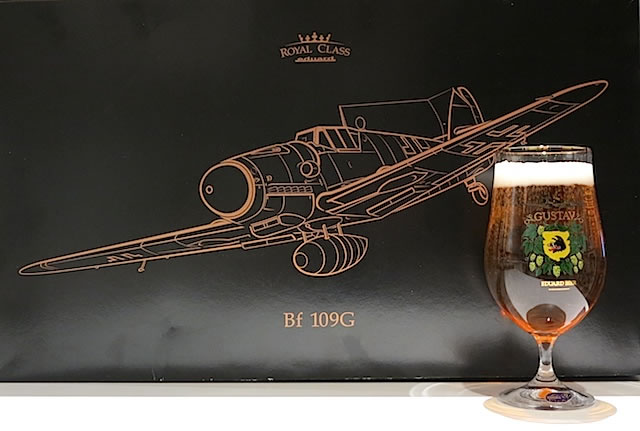
Eduard, 1/48 scale
S
u m m a r y |
| Catalogue Number: |
Eduard Kit No. R0009 – Bf 109 G Royal Class |
| Scale: |
1/48 |
| Contents and Media: |
Approximately 366 grey plastic parts (104 unused); 18 clear plastic parts (2 unused); 1 pre-painted photo-etched fret; 1 unpainted photo-etched fret; 32 grey resin parts; 1 sheet of pre-cut canopy and wheel masks; 1 sheet of pre-cut fabric seat harnesses; 1 small sheet of clear acetate film; 1 large decal sheet of national insignia, codes and individual markings for 16 aircraft; 2 decal sheets of stencils; 32 page full colour instruction booklet; 1 ‘Gustav Eduard Bier’ crystal glass; 1 ‘Gustav Eduard Bier’ coaster and game mat; 1 Bf 109 G-14 fragment mounted on a wooden base and associated certificate of authenticity |
| Price: |
USD$114.75 plus shipping available online from Eduard’s website and specialist hobby retailers worldwide |
| Review Type: |
FirstLook |
| Advantages: |
Finely moulded plastic parts with excellent surface detail; photo-etched and Brassin parts will add significant additional detail; large number of marking options covering all main Bf 109 G variants; interesting bonus items, particularly the Bf 109 G-14 relic. |
| Disadvantages: |
Dimensional issues that detracted from the original Bf 109 G-6 release carried over to this boxing. |
| Conclusion: |
Another impressive Royal Class release that offers lots of marking options and some attractive bonus items. The elephant in the room is the dimensional issue with the base kit that Eduard has acknowledged and is looking to fix. If you can live with or work around this, then the kit has an enormous amount to offer and is highly recommended. If the scale problem bothers you, you might find it worth waiting until Eduard addresses the issue in future Gustav releases – although these won't contain anything like the number of marking options presented here, or a piece of real Bf 109 G! |
Reviewed by Brad Fallen

Eduard's 1/48 scale Spitfire Mk.IXc Weekend Edition is available online from Squadron.com
The Messerschmitt Bf 109 G series entered service in mid-1942 and was the mainstay of the Luftwaffe fighter force for the next three years. Early Gustavs such as the G-2 – fitted with the new Daimler-Benz DB 605 engine but retaining the armament of the earlier F-4 – had amongst the best power-to-weight ratio of all Bf 109s. However performance suffered as the need for more firepower saw heavier weapons incorporated through Rüstsätze packages and, from the Bf 109 G-6 onwards, into the airframe itself.
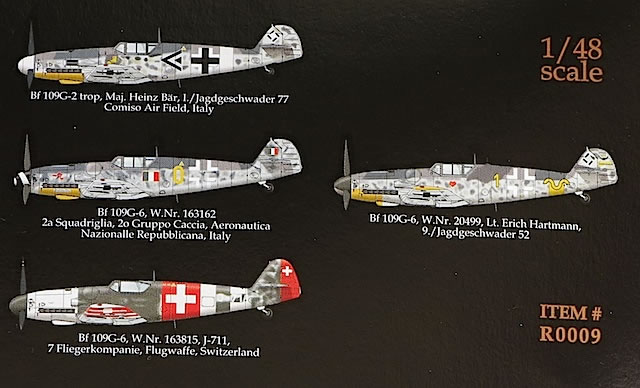
Approximately 12,000 G-6s were built out of a total Bf 109 production of 35,000, and to quote Lynn Ritger “there were a bewildering number of small variations between production batches: tall and short antenna masts, early and late head armour, framed and clear-vision canopies, tall and short vertical fin and rudder assemblies [and] additional radio equipment.”
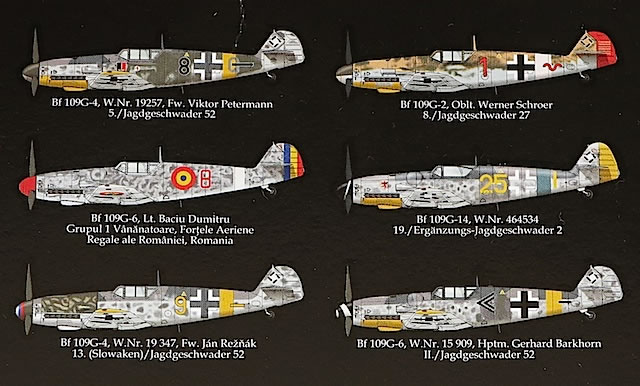
These inconsistencies were inevitable given G-6 production rates and Germany’s deteriorating war situation, and attempts to standardise manufacturing around a new ‘universal’ Bf 109, the G-14, didn’t fix the problem. About 5,500 G-14s were completed before the end of the war, many nearly indistinguishable from late series G-6s.
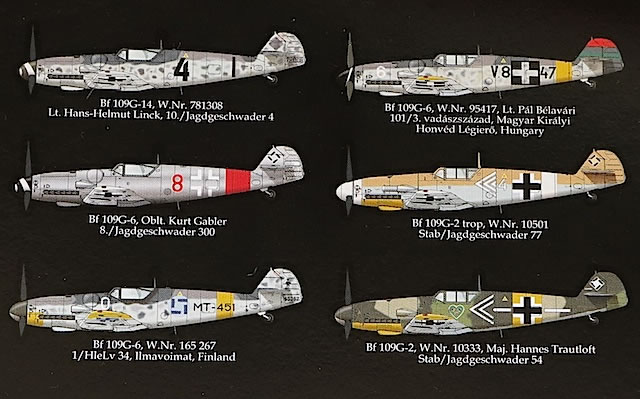
Eduard’s 1/48 Bf 109 G-6 was released in May 2014 and almost immediately engulfed in controversy; I’ve never seen a kit generate more discussion. In his comprehensive review Brett Green concluded that Eduard’s G-6 is
"...a very nice kit [that] simply blows the opposition away in terms of surface textures, level of detail and included options….Yes, there are a number of detail accuracy issues and the kit is oversized, especially the wing span. These issues will be a game-breaker for some, and irrelevant to others. It really is up to the individual modeller to make up his or her own mind."
Eduard has acknowledged the error in size, with CEO Vladimir Sulc explaining in the June 2014 edition of Info Eduard that
"...we wrongly calculated the expected dimensional attributes of the final model, in comparison with the master model we were using….We are about some 3mm longer in scale, which means the kit is about 1.5 per cent larger than it should be, and therefore gives an overall scale of 1:47.26. Concerning the wingspan, we are wider in overall span by about 2.6mm on each half of the wing, giving an average oversize of around 2.5%."
Vladimir apologised for the error and said
"We are currently finding ways in which we can fix this problem, but…acquiring the correct dimensional accuracy and implementing this with tooling re-works requires time….We will have these corrections implemented for the boxings which will follow the Royal Class edition."
He added in the July 2014 Info Eduard that
"We are looking into roads to…incorporate a more dimensionally sound item….This is not a simple feat, and…how to proceed has not been set….We are releasing the Royal Class kit, and progress on subsequent kits has been delayed until they can be reworked."
So in summary Eduard is investigating how to improve the accuracy of its Bf 109 G kits, but in the meantime has released the Royal Class boxing with parts manufactured on the original moulds. Before Brett sent me the Royal Class kit I asked him to compare its wings with those of his original G-6 model and they were identical in span, which confirms Vladimir’s advice that the kit has yet to be re-tooled.
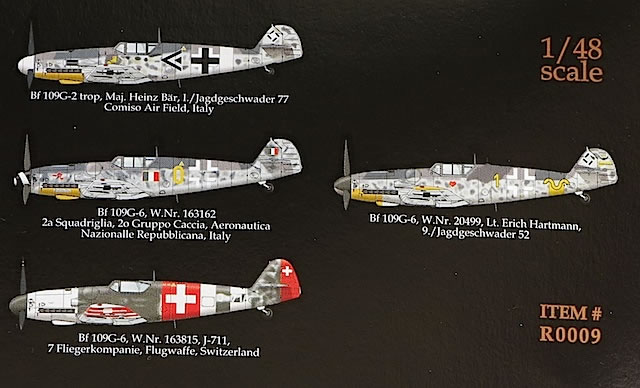
In this context, I won’t dwell on the dimensional aspects of the kit during this review – these have already been exhaustively covered – and will focus instead on the new or unique elements included in this boxing.
The first thing to note is the size of the box, which is noticeably larger than last year’s Royal Class Spitfire box. When you lift the lid it’s clear this increase is not a gimmick, as the tray inside is filled to the brim. Most of the space is taken up with sprues: 12 grey ones and two clear ones. Some of these are the same as those in the original G-6 release including sprues H and I, which hold most of the smaller parts, and sprues N and K, which contain the upper wing halves with wheel bulges and full span lower wing respectively.
Sprue T was also in the G-6 boxing and is dominated by the later style fuselage halves with moulded recesses to accommodate the MG 131 bulges. However the sprue has been tweaked slightly for this release and contains two parts that weren’t included in the original kit.
- The first is a starboard cowling bulge with the additional bump that was present on some Erla-built cowlings. The bump was required to accommodate the G-5 pressurisation compressor (although the same cowls could be fitted to non-pressurised Gustavs). The new part is a good match to reference photos, and fits perfectly to the right fuselage half.
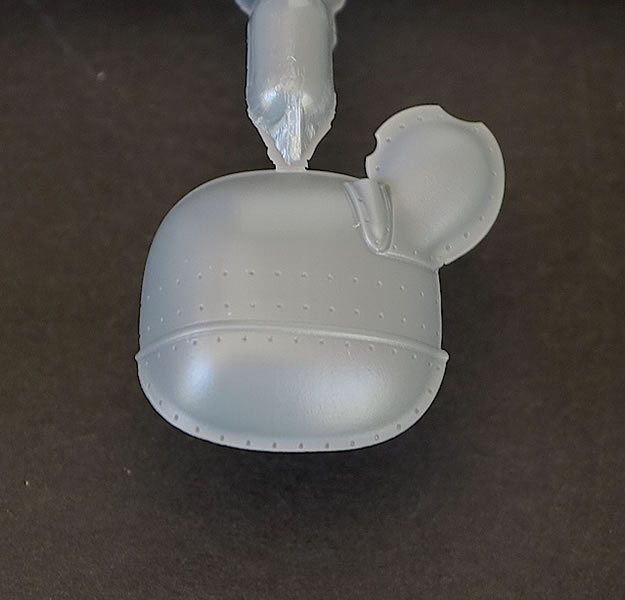
- The second new part represents “improved muzzle troughs of the fuselage weapons for Erla-built G-6s”, according to the July 2014 Info Eduard. The part is identical in size to the original gun troughs but features different panel configurations, which again are a good match to reference photos.
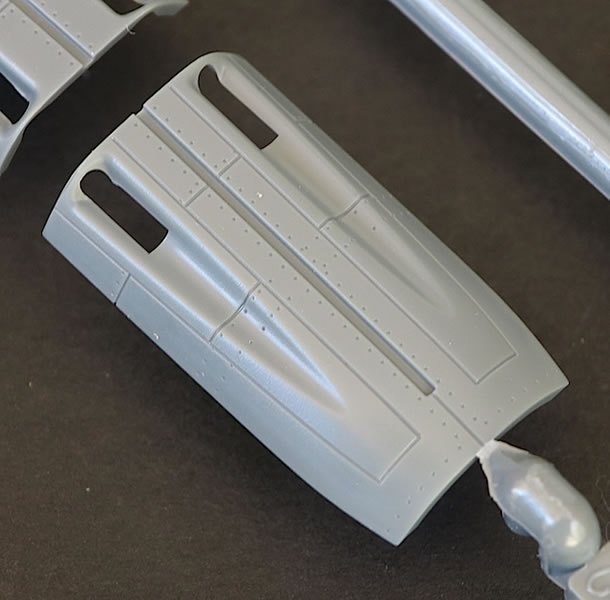
Two further sprues (S and M) respectively contain new fuselage halves for the kit’s Bf 109 G-2 and G-4 marking options, and new upper wings required for three of the four G-2s. However these sprues are not all new. The early upper wing sprue is attached to the same lower wing sprue (K) as the original G-6 upper wings, while the additional parts on the new fuselage sprue (including the Erla cowling bulge and gun troughs) are the same as those on sprue T. Many of these parts won’t be required for an early series Gustav, and will be welcome additions for the spares box.
The new fuselage halves have been engineered with two differences from the original G-6 fuselage. First, because early Gustavs weren’t fitted with the tall tail and rudder, Eduard has moulded the vertical tail integrally with the fuselage rather than separately as it did with the G-6. Secondly, the cowling gun troughs are separate parts that need attaching to their respective fuselage halves; test fitting indicates the troughs will need a little fettling, and possibly filler, before they will sit perfectly.
The new parts appear to capture the early Gustav fuselage. The most obvious difference is the absence of cowling bulge recesses, which has knock-on implications for the supercharger base plate recess on the lower port cowl. Eduard has moulded this recess as a perfect teardrop shape on both the early and late fuselage halves, which caused a minor controversy when the G-6 kit was released. On most, but not all, G-6s the supercharger base plate was manufactured with a slight kink on the upper edge to accommodate the intrusion of the port gun bulge; this is not reflected in the kit parts. In comparison, the absence of bulges on early Bf 109 Gs means that the shape of the supercharger recess is accurate for these aircraft.
The locations of fuel fill points and access hatches look to be correct for a G-2 and G-4, although it’s hard to be definitive because many of the available Gustav plans are inaccurate in this regard. A good example is the inspection panel that was introduced at station 8 on the port fuselage on G-5s and later Gustavs (directly under the base of the vertical fin), which a number of plans also show as present on earlier machines. Eduard appears to have got this one right, with the panel present on the G-6/G-14 fuselages and absent from the G-2/G-4 parts.
The inaccurate wing root bumps that were the subject of much discussion after the G-6 release are also present on the new fuselage parts; in his review Brett suggests several practical options for dealing with them.
Apart from the absence of the kidney-shaped bump over the wheel well, the new upper wing halves are identical to their equivalents in the G-6 kit.
A final point to note about the fuselage and wing sprues is that Eduard provides enough parts to build two early, an early and a late, or two late Gustav models – which will leave you with four spare fuselage and wing sets.
Two identical clear sprues are provided. The Erla clear-vision canopy, which was included in the original kit but not used, will be required here for five of the 16 marking options. A set of pre-cut canopy and wheel hub masks is provided to assist with painting, and includes masks for two early and two late Gustav canopies.

The pre-painted photo-etched fret contains a wealth of cockpit detail, with the instrument panels a highlight.
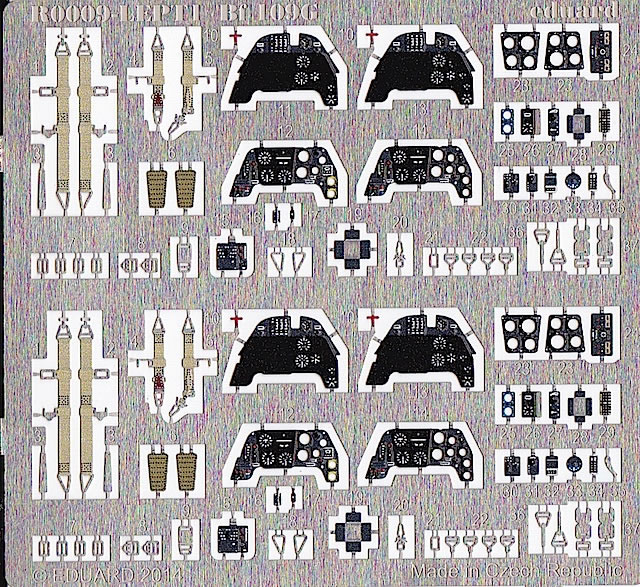
The etched seat harnesses are also excellent, but upstaged by a sheet of laser-cut fabric seatbelts produced for Eduard by HGW. I’ve used HGW harnesses in a couple of 1/32 Wingnut Wings models, and thoroughly recommend them – while a little fiddly to assemble, when installed they look better and drape more realistically than etched equivalents.
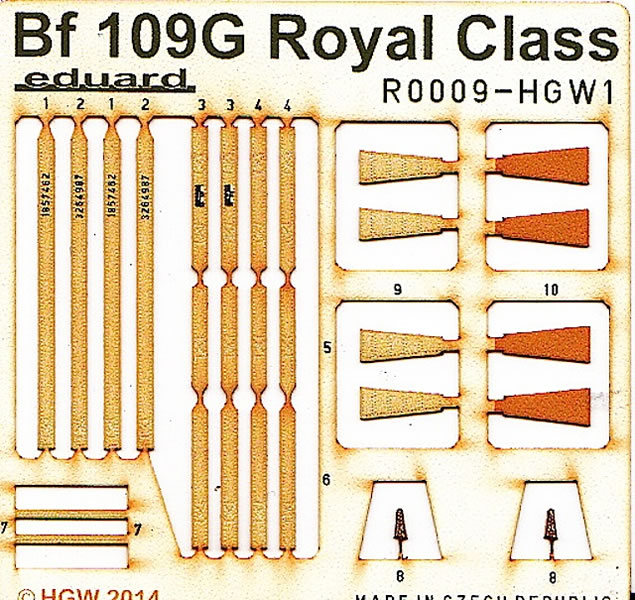
Rounding out the photo-etched details is a fret of unpainted parts, which in addition to rudder pedals and assorted grills includes wing scribing templates for modellers who choose to install the supplied Brassin WGr. 21 rockets.
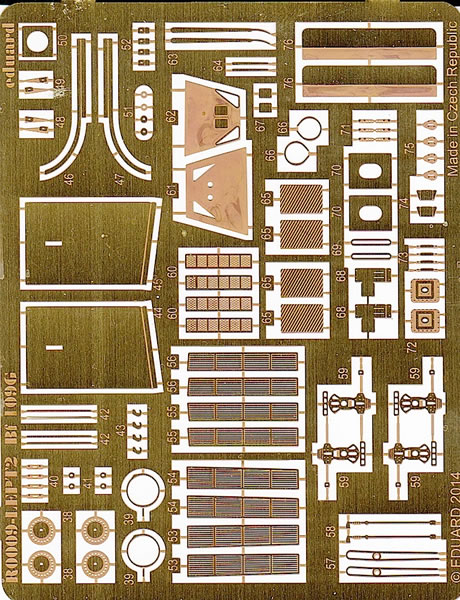
The rockets are one of three Brassin sets included in this release – the others are two pairs of wheels and a comprehensive Rüstsätz 6 MG 151/20 gondola package. The resin parts are perfectly cast, with specific notes as follows:
- Wheels. These appear to depict mid-war stamped steel, 660 x 160mm wheels with fluted outer rims and ribbed tyres. As such they are not applicable for all marking options, with modellers building options A-F directed to use different plastic parts. I’d recommend checking period photos to confirm the type of wheels fitted to the aircraft you are modelling.
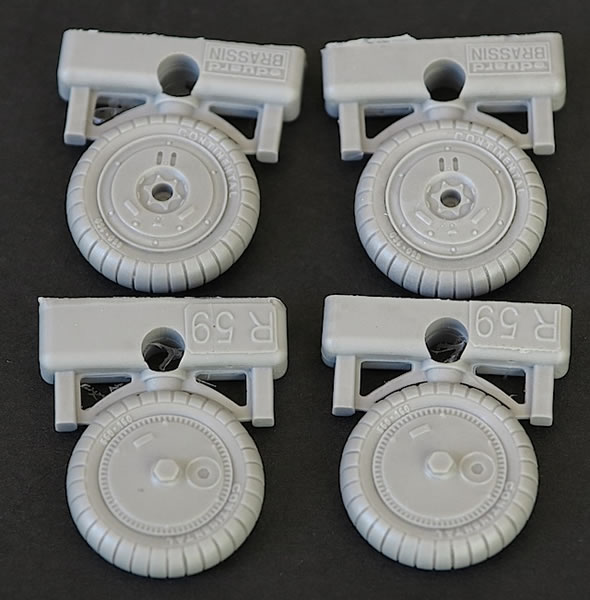
- WGr.21 rockets. These should look excellent when installed, but will require patience to assemble and then careful handling to avoid breakage. Two rocket options are provided: rocket heads for slipping into the tubes (to give the impression of an loaded rocket tube), and entire rockets for use in diorama settings. My reference photos show WGr.21-equipped aircraft were fitted with a small, supplementary control panel beneath the main instrument panel, which is not included in the kit and will need to be scratch built. The instructions don’t mention which marking options were armed with WGr.21 rockets, so check your references before installing.
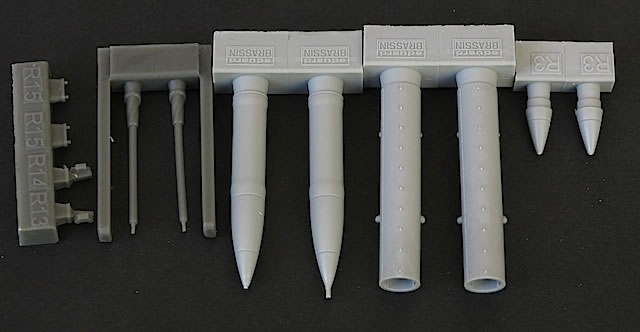
- MG 151/20 gondolas. The instructions are similarly vague in relation to which of the marking options were Rüstsätz 6-equipped. Again there are two display options: one for closed gondolas, and the other for open gondolas with the guns inside fully visible. Rüstsätz 6 gondolas are also included on the plastic sprues, and as some have pointed out these are slightly different in size to the Brassin gondolas. I’m not going to enter the fray as to which is the more accurate, but if you are considering installing gondolas on your model you may wish to conduct some further research.
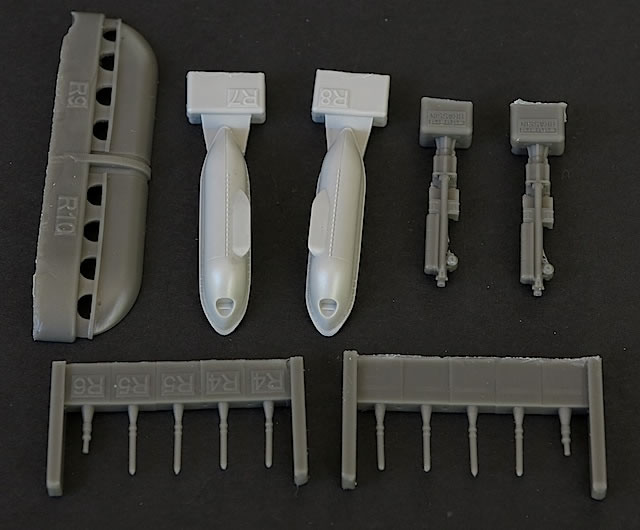
Notwithstanding the omissions mentioned above, the A4-sized, 32-page instruction booklet is very comprehensive. The variety of options and large number of photo-etched and resin parts make for busy assembly illustrations, and it will pay to read each step carefully. Gunze paint numbers are used to call out both detail and final airframe painting, with the latter illustrated via full-colour four-view drawings for each aircraft.
Marking Options
Royal Class boxings always provide plenty of marking options – in this case for 16 different aircraft. These options include:
- Four Bf 109 G-2, two Bf 109 G-4, eight Bf 109 G-6, and two Bf 109 G-14;
- Bf 109s operated by six nations;
- Bf 109s flown by nine aces; and
- the Bf 109 G-14 of which a fragment is included in the kit (see below).
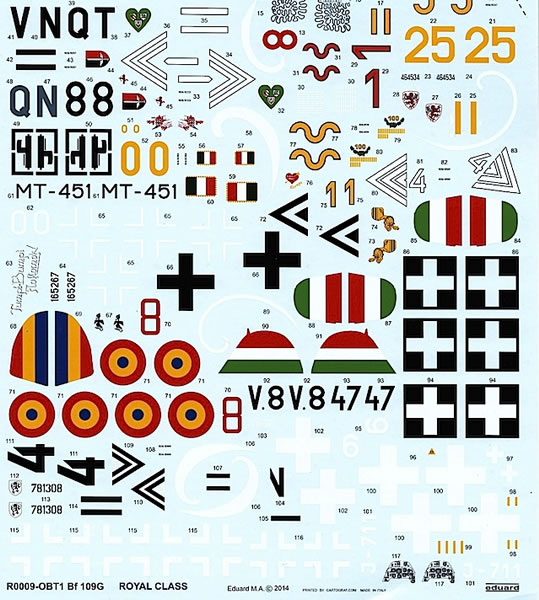
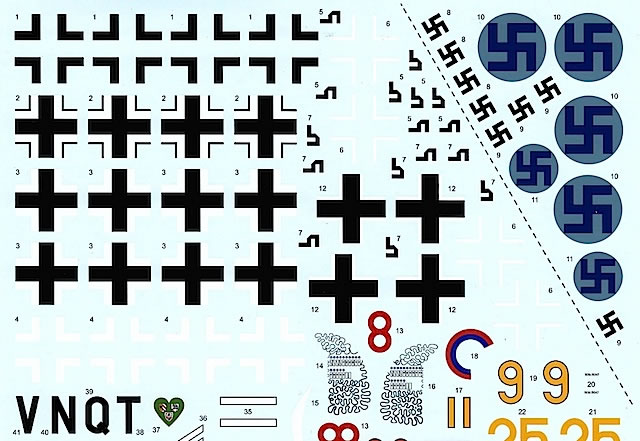
The specific aircraft are as follows:
-
Bf 109 G-2, W.Nr.10333, flown by Major Hannes Trautloft, CO of JG 54, Eastern Front, summer 1942.
-
Eduard suggests RLM 02 Gray/RLM 70 Black Green/‘Mixed Green’ over RLM 78 Blue, but concedes this is conjectural; spinner 2/3 RLM 70 and 1/3 white; RLM 04 Yellow fuselage band, lower wingtips and lower engine cowling.
-
Bf 109 G-2 Trop, flown by Oberleutnant Werner Schroer, CO of 8./JG 27, Rhodes, Greece, early November 1942.
-
Bf 109 G-2 Trop, flown by Major Heinz Bär, CO of I./JG 77, Comiso, Italy, September 1942.
-
Bf 109 G-2 Trop, W.Nr.10501, Stab/JG 77, Bir el Abd, Libya, early November 1942.
-
Bf 109 G-4, W.Nr.19257, flown by Feldwebel Viktor Petermann, 5./JG 52, Eastern Front, June 1943.
-
Bf 109 G-4, W.Nr. 19347, flown by Feldwebel Jan Reznak, 13. (Slowaken)/JG 52, Anapa, Russia, April/May 1943.
-
Bf 109 G-6, W.Nr.20499, flown by Leutnant Erich Hartmann, CO of 9./JG 52, Nove Zaporozhye, Ukraine, October 1943.
-
Bf 109 G-6, W.Nr.15909, flown by Hauptmann Gerhard Barkhorn, CO of II./JG 52, Eastern Front, September 1943.
-
Bf 109 G-6, flown by Oberleutnant Kurt Gabler, 8./JG 300, Jüterbog-Waldlager, Germany, July 1944.
-
Bf 109 G-6, W.Nr.163162, 2a Squadriglia, 2o Gruppo Caccia, Verona-Villafranca, Italy, October 1944.
-
Bf 109 G-6, W.Nr.165267, flown by Eino Luukkanen, 1/HleLv 34, Taipalsaari, Finland, July 1944.
-
74/75 over 76, with 74/75 mottling on fuselage sides and RLM 76 patches around canopy; spinner 2/3 RLM 70 and 1/3 white; RLM 04 lower engine cowling, lower wingtips, fuselage band and propeller tips.
-
Bf 109 G-6, W.Nr.95417, flown by Lt. Pal Belavari, 101/3. vadaszszazad, Veszprem, Hungary, August 1944.
-
74/75 over 76, with 74/75 mottling on fuselage sides; black and white spiral spinner; red, white and green stripes on tail surfaces toned down with darker overspray; RLM 04 lower wingtips and fuselage band.
-
Bf 109 G-6, flown by Lt. Baciu Dumitru, Grupul 1 Vananatoare, early May 1945.
-
Bf 109 G-6, W.Nr.163815, Fliegerkompagnie 7, Flugwaffe, Interlaken, June 1945.
-
Bf 109 G-14, W.Nr.464534, 19./EJG 2, Pilsen, Czechoslovakia, May 1945.
-
Bf 109 G-14, W.Nr.781308, flown by Leutnant Hans-Helmut Linck, 10./JG 4, Alteno, Germany, 11 September 1944.
-
Likely 74/75 over 76, with 74/75 mottling on fuselage sides; RLM 70/white spiral spinner; Balkenkreuz on fuselage and upper wings, and Hakenkreuz on vertical tail, have been overpainted.
The markings for these aircraft are printed on three decal sheets – one large sheet for the national and unit markings and codes (by Cartograf), and two smaller, identical sheets of airframe stencils (by Eduard). All three sheets are of good quality, with the strong colours and crisp printing of the Cartograf decals a particular highlight.
The comprehensive stencil sheets include a number of stencil variations, with placement assisted by a detailed four-view grayscale guide.
Bonus Items
Royal Class releases always include interesting bonus items, and this kit has two – a 'Gustav' beer glass and a fragment of Bf 109 G-14 W.Nr.781308/'Black 4' (marking option P). Both concepts have featured in previous Royal Class kits: last year's Spitfire Mk.IX had a beer glass and 2007's Fw 190 A kit a small piece of the Fw 190 A-8/R2 'Yellow 8' that was shot down over Czechoslovakia on 11 September 1944. This does not, however, make these items any less interesting inclusions here.
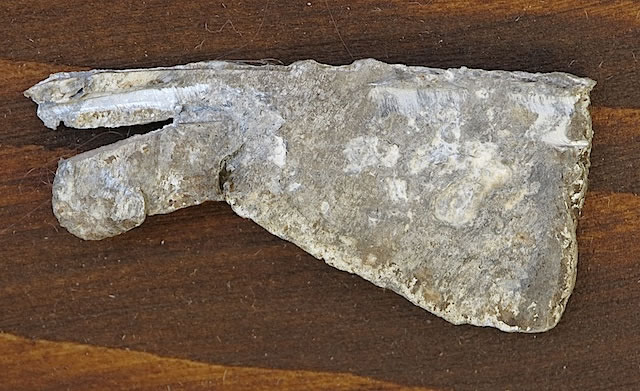
The G-14 relic is from a machine lost on the same date as the Fw 190, this time to pilot error that led to a collision between two Bf 109s. The 3.5 x 2cm fragment is mounted on a wooden base above a gold plaque that details the aircraft, pilot, and unit along with the date of the crash.
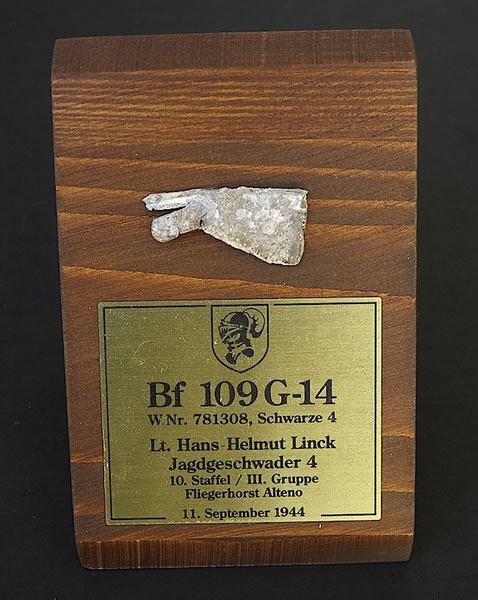
The fragment is accompanied by a four-page booklet that includes a certificate of authenticity signed by the Director of the Museum of the Air Battle over the Ore Mountains, and a detailed account of the action in which 'Black 4' was lost.
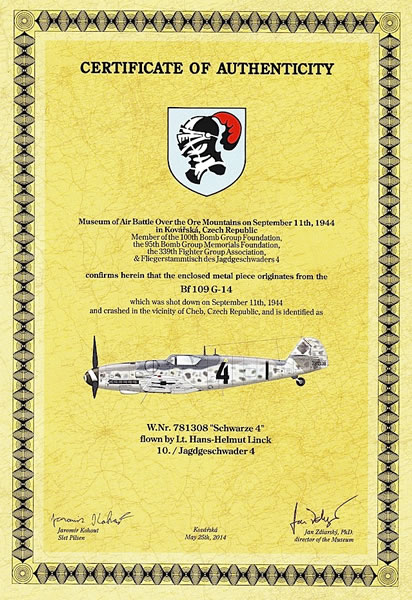
The crystal beer glass arrived in perfect condition, thanks to solid packaging, and features a Bf 109 G flying above a wreath of hops overlaid with a Luftwaffe unit insignia – in this case JG 300. Eduard has produced glasses with six different insignia, which have been distributed amongst the Royal Class kits and are also available to purchase separately and as a set (or will be once Eduard gets more in stock, as the first batch is sold out).
The final bonus item is also a random allocation – a beer coaster sealed in opaque packaging that portrays one of the kit marking options (the review sample coaster depicted marking option O, Bf 109 G-14, W.Nr.464534).
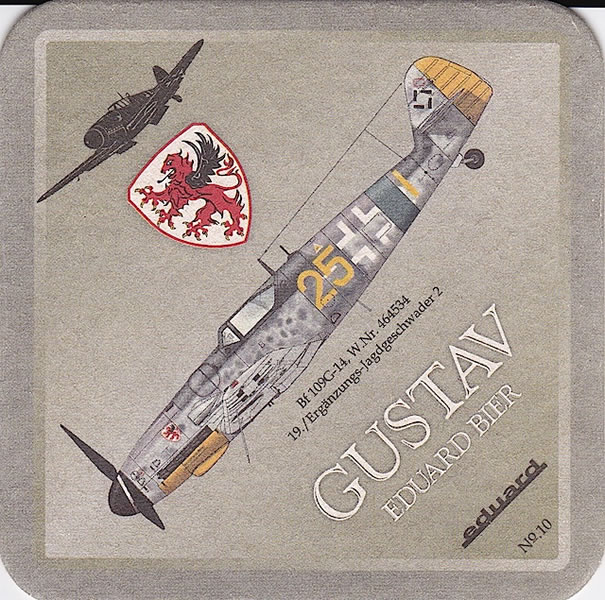
Like the beer glasses, the coasters are available separately and can be used to play a rewards-based game similar to the one Eduard ran when it released the Spitfire Royal Class kit.
This is another impressive Royal Class release that offers lots of options along with some interesting bonus items. The elephant in the room is the dimensional issue with the base kit that Eduard has acknowledged and is looking to fix. If you can live with or work around this, then the kit has an enormous amount to offer and is highly recommended. If the scale problem bothers you, you might find it worth waiting until Eduard addresses the issue in future Gustav releases – although these won't feature anything like the number of marking options presented here, or contain a piece of real Bf 109 G!
References:
-
Dominique Breffort and Andre Jouineau, 'Messerschmitt Me 109 Volume II: from
1942 to 1945' (Histoire and Collections, 2002)
-
Lynn Ritger, 'The Messerschmitt Bf 109: A Comprehensive Guide for the Modeller – Part 2: 'F' to 'K' variants' (SAM Publications, 2007)
-
Y. Kadari (ed), 'Aero-Journal Hors-Serie No.1: Messerschmitt Bf 109 G and K' (Caraktere, 2008).
Thanks to Eduard for the sample
Review Text and Images Copyright © 2014 by Brad Fallen
Page Created 9 September, 2014
Last updated
10 September, 2014
Back to HyperScale Main Page
Back to Reviews Page |
